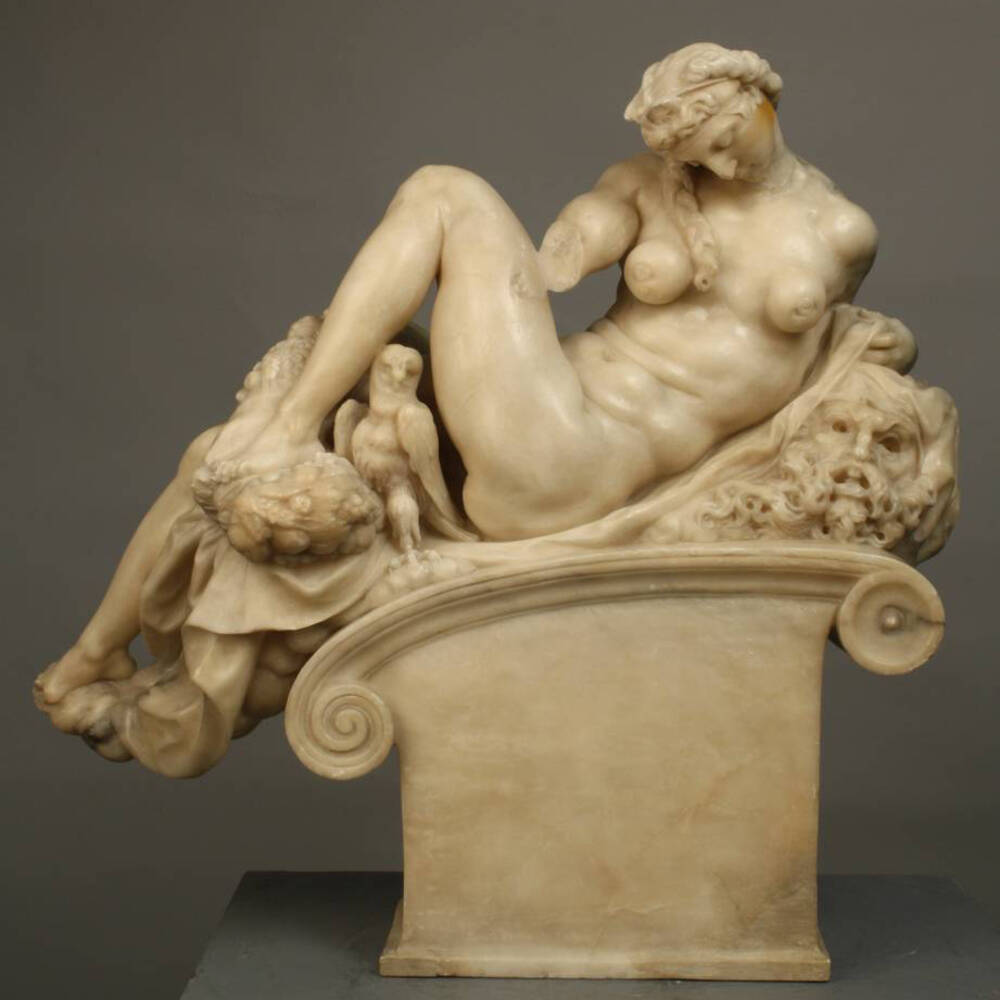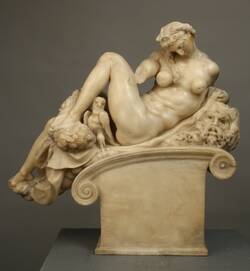Michelangelo left his "Times of Day" partly unfinished, as can be seen, for example, in the only sketched heads of "Day" and "Evening". Giambologna, on the other hand, completed his versions down to the last detail. In Michelangelo's work, only the "Night" has attributes: Owl (night bird) and mask (nightmares). Giambologna also gave the other three figures distinctive features, for they rest on clouds in which the sun can be seen whole ("Day"), rising ("Morning") and setting ("Evening").
Further Media




These statuettes have been in the Dresden collection since the late sixteenth century. Most likely, they were a gift sent from Florence – with a power political agenda in mind.
Michelangelo’s Times of Day were monumental sculptures decorating the funerary chapel of the Medici – the city’s most powerful ruling dynasty. But the Medici family depended on the favour of the German Holy Roman Emperor to secure a permanent basis for their claim to power. The Medici realms in Florence and Tuscany were largely an imperial fiefdom under the Holy Roman Emperor – and so to gain the Emperor's favour, the Medici were at pains to establish good relations with the Dresden court. After all, from his youth August, Elector of Saxony, had been friends with the Habsburg Holy Roman Emperor Maximilian II – and so the Medici saw August as a suitable candidate to put in a good word for them when the time came. And the time obviously did come – since partly due to August’s support, Maximillian granted the Medici rulers the title Grand Duke of Tuscany. In this context, cultural exchange flourished between Florence and Dresden – or ‘Florence on the River Elbe’, as the city also became known. Giambologna’s exquisite alabaster statuettes were sent to Dresden as a valuable present – no doubt in the spirit of the saying ‘gifts cement friendships’.
- Location & Dating
- before 1574
- Material & Technique
- Alabaster
- Dimenions
- H: 44,5 cm, B: 46,5 cm, T: 18,8 cm
- Museum
- Skulpturensammlung
- Inventory number
- H4 005 / 032